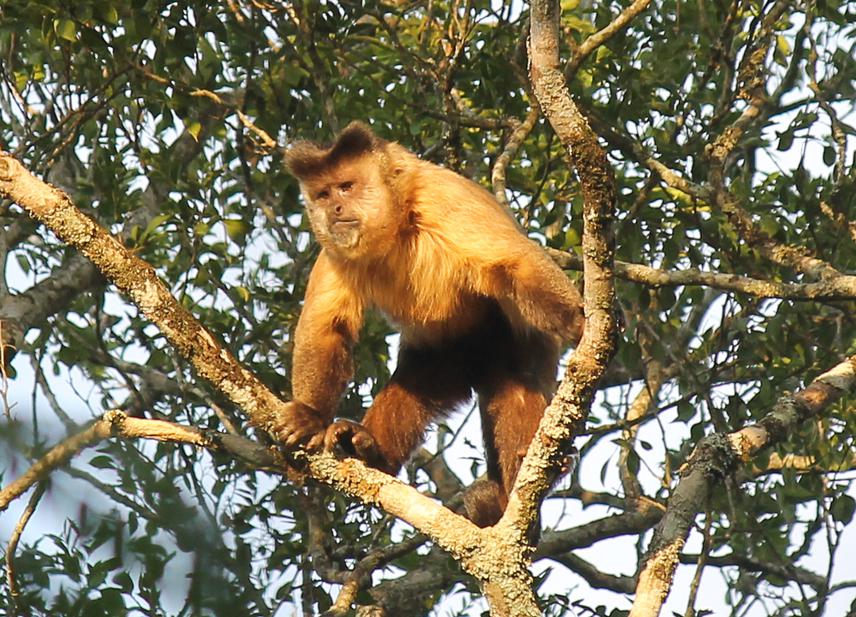Rebecca Smith
Less than 9% of the Paraguayan Upper Paraná Forest remains and the last remnants are under extreme pressure from industrial agriculture, fires, illegal logging, settlements and hunting. The hooded capuchin is a species that represents the near silent decline of animal populations in this habitat. Until 2022 it was classified as Least Concern before being raised to Vulnerable due to extreme habitat loss.
San Rafael is the largest remaining forest fragment in Paraguay, but it is privately owned with little legal protection. The highly marginalised Mbya Guaraní indigenous people who live around San Rafael have few economic opportunities besides renting their land for industrial soy production – a disaster for human health and the ecosystem. This project aims to have tangible, lasting and powerful impacts on the recovery of this critically endangered ecosystem and improving quality of life and increasing opportunities for hundreds of historically neglected people.

Hooded Capuchin male in San Rafael
Economically beneficial reforestation will increase forest cover, available wildlife habitat and forest connectivity while the increase in income, through eco-tourism and later through yerba mate profit, will reduce poverty and reliance on renting land to soy farmers and extractive activities in the remaining forest. Capacity building will allow this highly marginalised community to develop skills and knowledge to take advantage of Paraguay’s growing ecotourism industry, that has so far mainly benefited city dwellers.
Through a participatory environmental education programme in 20 rural and indigenous schools using the flagship hooded capuchin, we will bring conservation issues to a new generation of Paraguayans, currently lacking opportunities to develop more nuanced understanding of their disappearing natural heritage. Reducing the disconnect from nature in the communities will inspire the youth to protect the capuchins habitat by reduced burning of rubbish near the forest and not keeping wild animals as pets.
Providing the people nearest to the forest and with the greatest need with alternative options will reduce the need for hunting, allowing the recovery of biodiversity and reducing tension in the area through decrease conflict and incidences of trespassing. Together our long-term, multifaceted approach tackles the issues facing the forest on several fronts, increasing forest cover, available wildlife habitat and forest connectivity while the increasing income, reducing poverty and reliance on renting land to soy farmers and extractive activities in the remaining forest.
Header: Endangered tree ferns Chachis in the BAAPA. © Stephanie Heitmueller, PWB2017.